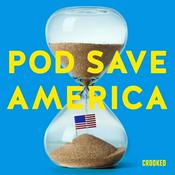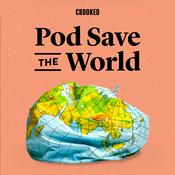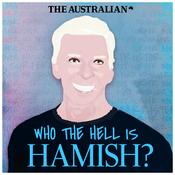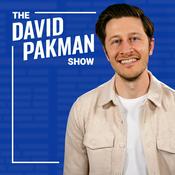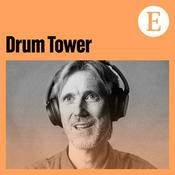1070 episodes

The Stats of the Nation: Older people, education, prisons and the weather
08/1/2026 | 28 mins.
What kind of state does the UK find itself in as we start 2026? That’s the question Tim Harford and the More or Less team is trying to answer in a series of five special programmes.In the fourth episode, we’re searching for answers to these questions:Are one in four pensioners millionaires?Is England’s education system performing better than Finland’s? And how does it compare to Scotland, Wales and Northern IrelandAre our prisons going to run out of space?Is the weather getting weirder?Get in touch if you’ve seen a number in the news you think we should take a look at: [email protected]: Heidi Karjalainen, Senior Research Economist at the Institute for Fiscal Studies Harry Fletcher-Wood, Director of Training at StepLab John Jerrim, Professor of Education and Social Statistics at University College London Cassia Rowland, Senior Researcher at the Institute for Government Friederike Otto, Professor of Climate Science at Imperial College LondonCredits:Presenter: Tim Harford Producers: Lizzy McNeill, Nathan Gower, Katie Solleveld and Charlotte McDonald Series producer: Tom Colls Production co-ordinator: Maria Ogundele Sound mix: Sarah Hockley and Neil Churchill Editor: Richard Vadon

The Stats of the Nation: Sex, drugs and empty homes
07/1/2026 | 29 mins.
What kind of state does the UK find itself in as we start 2026? That’s the question Tim Harford and the More or Less team is trying to answer in a series of five special programmes.In the third episode, we’re searching for answers to these questions:Are there really 700,000 empty homes that could be used to solve the housing crisis?Does the NHS pay less for drugs than health services in other countries?Is violent crime going up or down?Is the UK in the midst of a fertility crisis?Get in touch if you’ve seen a number in the news you think we should take a look at: [email protected]:Dr Huseyin Naci, Associate Professor and Director the Pharmaceutical Policy Lab at the London School of Economics Professor Jennifer Dowd, deputy director of the Leverhulme Centre for Demographic Science at the University of OxfordCredits:Presenter: Tim Harford Reporters: Lizzy McNeill and Nathan Gower Producers: Katie Solleveld and Charlotte McDonald Series producer: Tom Colls Production co-ordinator: Maria Ogundele Sound mix: Sarah Hockley and James Beard Editor: Richard Vadon

The Stats of the Nation: Health
06/1/2026 | 28 mins.
What kind of state does the UK find itself in as we start 2026? That’s the question Tim Harford and the More or Less team is trying to answer in a series of five special programmes.In the second episode, we’re asking some interesting questions about health and the NHS:Has life expectancy in the UK starting to go up again at last?What statistics tell you about the health of the NHS?After years of promises, are there actually any more GPs?What’s happening to cancer rates in the UK?What’s gone wrong with productivity in the health service?Get in touch if you’ve seen a number in the news you think we should take a look at: [email protected]:Stuart McDonald, Head of Longevity and Demographic Insights at the consultancy Lane Clark & Peacock (LCP) Jon Shelton, Head of Cancer Intelligence at Cancer Research UK Ben Zaranko, Associate Director of the Institute for Fiscal StudiesCredits:Presenter: Tim Harford Reporter: Nathan Gower Producers: Lizzy McNeill, Katie Solleveld and Charlotte McDonald Series producer: Tom Colls Production co-ordinator: Maria Ogundele Sound mix: Sarah Hockley and Neil Churchill Editor: Richard Vadon

The Stats of the Nation: The Economy
05/1/2026 | 28 mins.
What kind of state does the UK find itself in as we start 2026? That’s the question Tim Harford and the More or Less team is trying to answer in a series of five special programmes.In the first episode, we’re starting the week by asking some interesting questions about the economy:Is the cost-of-living crisis over?The economy is expected to have grown by 1.5% in 2025. Is that a big number?When taxes are at record highs, why does it feel as if everything is such hard work for public services?Do the majority of people in Scotland pay less tax than they would in the rest of the UK?Does the UK have a more progressive tax system than Scandinavian countries?Get in touch if you’ve seen a number in the news you think we should take a look at: [email protected]:Ruth Curtice, Chief Executive of the Resolution Foundation Helen Miller, Director of Institute for Fiscal Studies Mairi Spowage, Professor and Director of the Fraser of Allander Institute at the University of Strathclyde John Burn-Murdoch, chief data reporter for the Financial TimesCredits:Presenter: Tim Harford Quiz contestant: Lizzy McNeill Producers: Nathan Gower, Katie Solleveld and Charlotte McDonald Series producer: Tom Colls Production co-ordinator: Maria Ogundele Sound mix: Sarah Hockley and James Beard Editor: Richard Vadon

Numbers of the year 2026
03/1/2026 | 8 mins.
From record-breaking passenger numbers, to some more record-breaking numbers - courtesy of the Men’s football World Cup. We look forward to what 2026 might have in store for us - numerically of course.Presenter: Tim Harford Producers: Charlotte McDonald and Katie Solleveld Production Co-ordinator: Maria Ogundele Sound Mix: Rod Farquhar Editor: Richard Vadon
More News podcasts
Trending News podcasts
About More or Less
Listen to More or Less, The Rest Is Politics and many other podcasts from around the world with the radio.net app

Get the free radio.net app
- Stations and podcasts to bookmark
- Stream via Wi-Fi or Bluetooth
- Supports Carplay & Android Auto
- Many other app features
Get the free radio.net app
- Stations and podcasts to bookmark
- Stream via Wi-Fi or Bluetooth
- Supports Carplay & Android Auto
- Many other app features


More or Less
download the app,
start listening.

